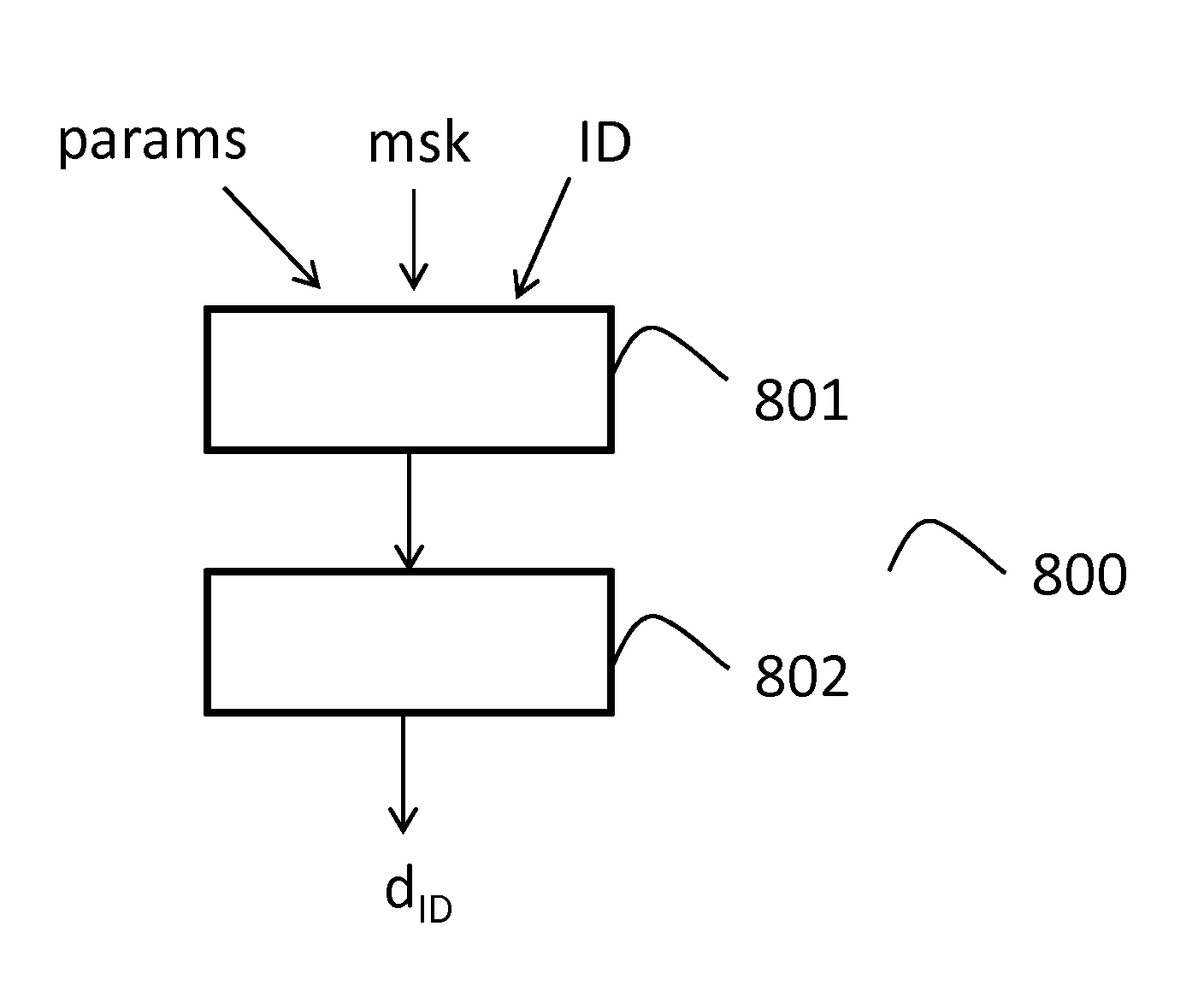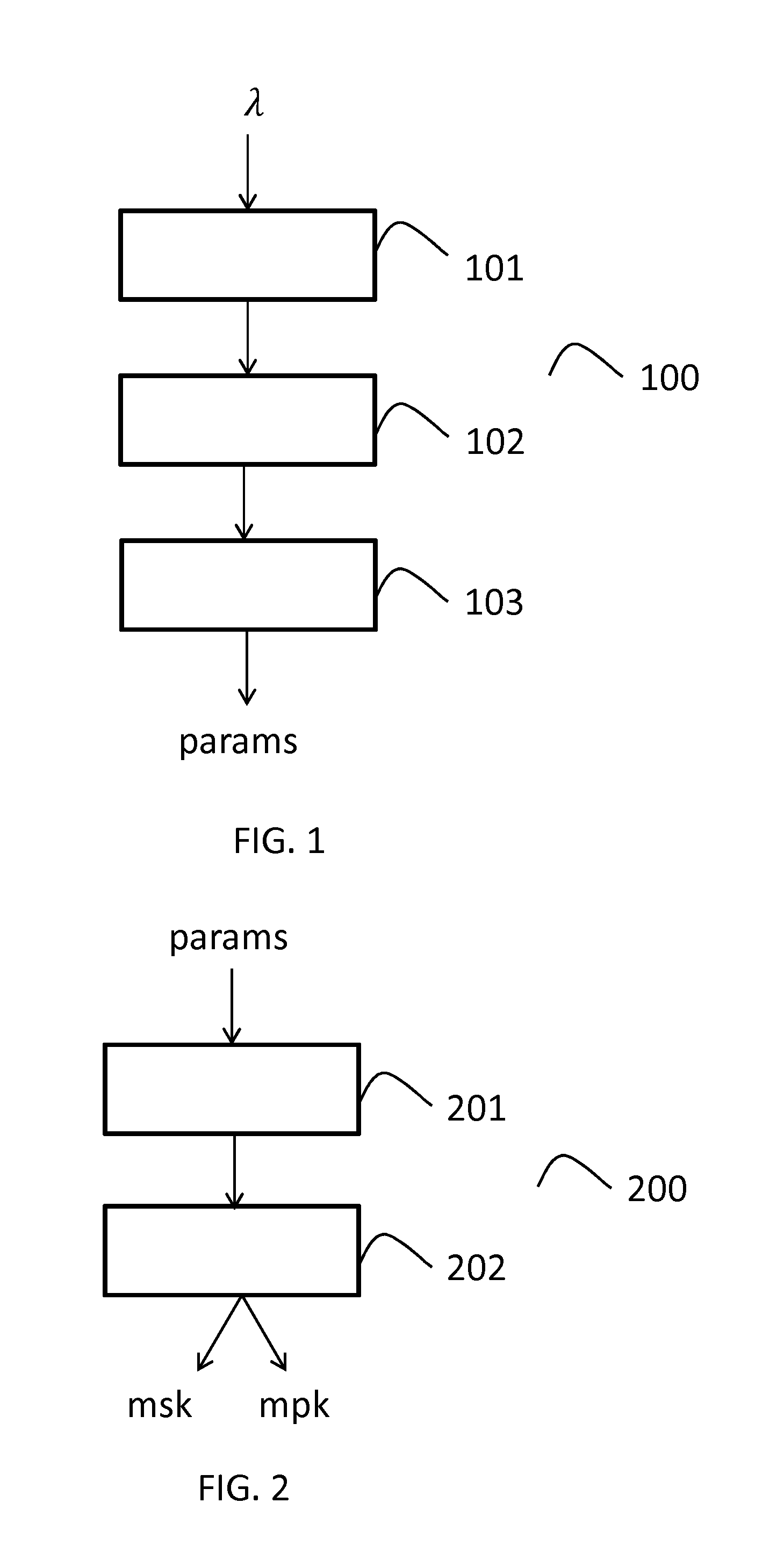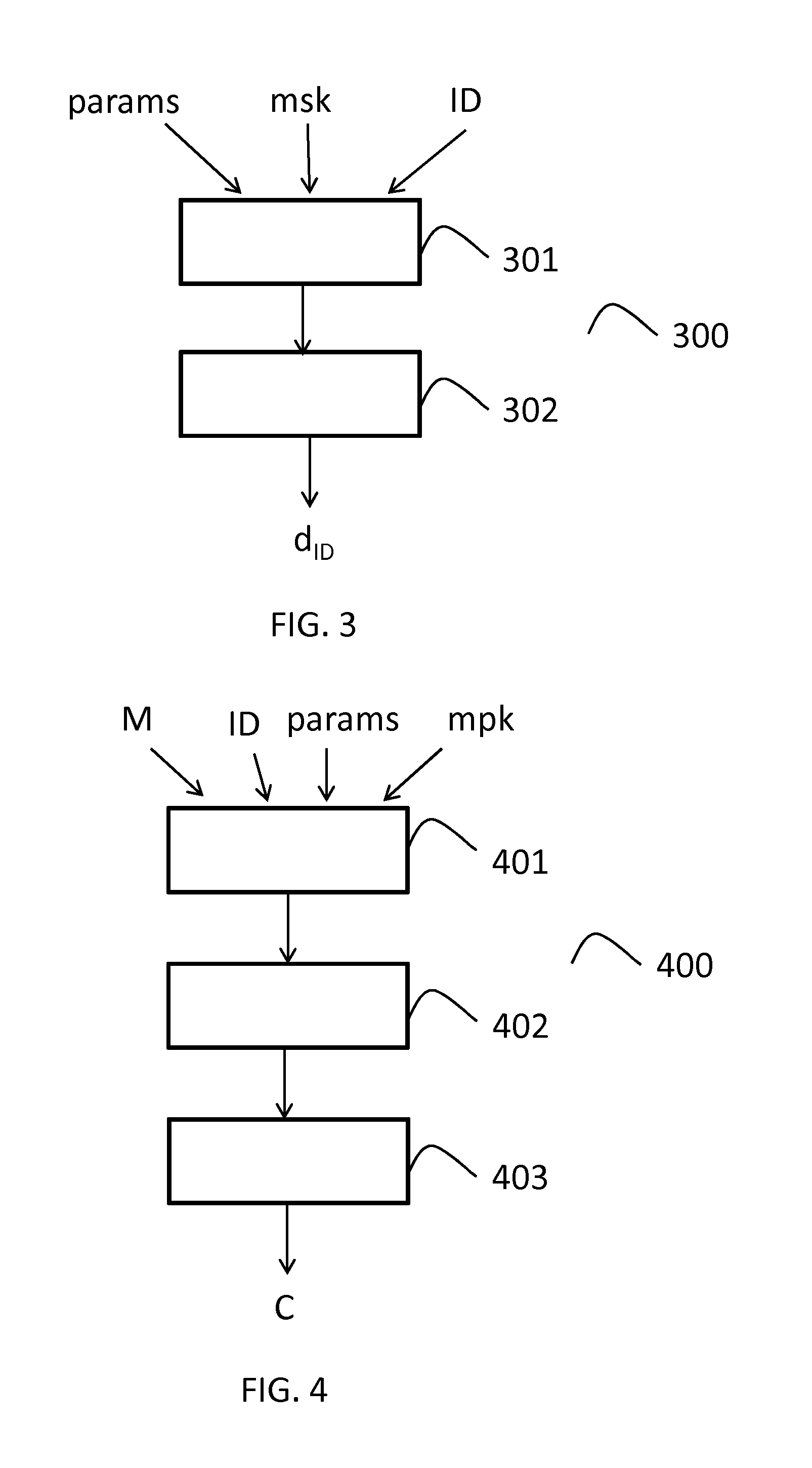Method for ciphering and deciphering digital data, based on an identity, in a multi-authorities context
a multi-authority context and identity technology, applied in the field of identity-based encryption, can solve the problems of not knowing the security bounds of n, and not knowing the semantic security of ibe schemes, and not knowing the security bounds of anonymity and ta-anonymity
- Summary
- Abstract
- Description
- Claims
- Application Information
AI Technical Summary
Benefits of technology
Problems solved by technology
Method used
Image
Examples
Embodiment Construction
[0068]FIG. 1 discloses a flowchart which depicts some steps performed by an electronic device during a common setup generation process, according to one embodiment of the disclosure.
[0069]More precisely, the common setup generation process, referenced 100, takes as input a security parameter λ which corresponds to a bit-length.
[0070]In a step, referenced 101, the electronic device chooses or selects or obtains a bilinear group (, , T) of prime order p>2λ, with a efficiently computable isomorphism ψ:→.
[0071]In a step referenced 102, the electronic device obtains (or chooses) several random generators from the group (in this embodiment, the number of random generators is equal to four): gz,gr,hz,hu.
[0072]In a step referenced 103, the electronic device chooses an identifier associated to a hash function H: {0,1}*→3, that is modeled as a random oracle in the security analysis. The plaintext space is =T, and the ciphertext space is :=3×T.
[0073]The electronic device then provides the com...
PUM
 Login to View More
Login to View More Abstract
Description
Claims
Application Information
 Login to View More
Login to View More - R&D
- Intellectual Property
- Life Sciences
- Materials
- Tech Scout
- Unparalleled Data Quality
- Higher Quality Content
- 60% Fewer Hallucinations
Browse by: Latest US Patents, China's latest patents, Technical Efficacy Thesaurus, Application Domain, Technology Topic, Popular Technical Reports.
© 2025 PatSnap. All rights reserved.Legal|Privacy policy|Modern Slavery Act Transparency Statement|Sitemap|About US| Contact US: help@patsnap.com



